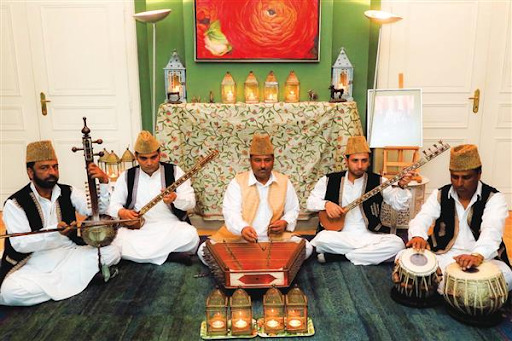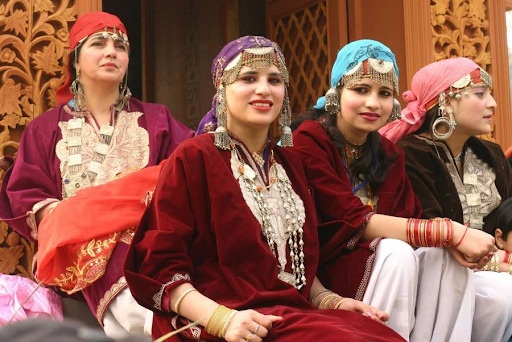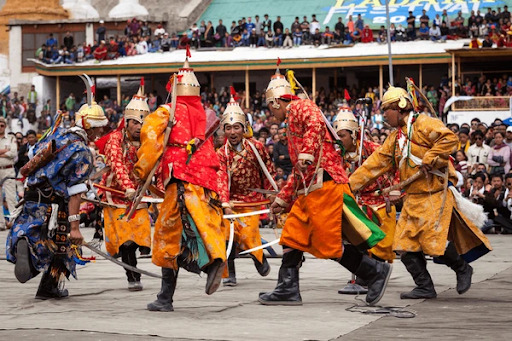Echoes of Culture: Unveiling Kashmiri Festivals
Kashmir, often referred to as “Paradise on Earth,” welcomes visitors with open arms, offering an escape into a world where time seems to stand still. Amidst the snow-capped peaks and the serene Dal Lake, Kashmir holidays become an immersive experience into the local culture, especially during the festive seasons.
Before delving into the kaleidoscope of music and dance in Kashmiri festivals, it’s crucial to understand the significance of traditional attire. What to wear in Kashmir is not merely a fashion question; it is a connection to the region’s cultural roots.
The festivals here are a mash-up of cultures, with music and dance playing a major part in telling stories of traditions and history.
VARIOUS ASPECTS OF KASHMIRI MUSIC AND DANCE FESTIVALS

Kashmiri festivals bring people from every aspect of life together in a celebration of life; they are more than just activities. The melodies of the santoor, rabab, and tumbaknari, among other traditional instruments, fill the air, providing a background of music that echoes throughout the valleys.
The songs span from the upbeat beats of the Rouf, a popular dancing style, to the soul-stirring sounds of Sufiyana Kalam.
In Kashmir, celebrating festivals is a community event that removes barriers and promotes harmony. Every event, whether it is the majesty of Navroz, the excitement of Eid and Diwali, or the Parsi New Year, adds a unique flavour to Kashmir’s melting pot of cultures.
- The dance of tradition
The elegant dance that enhances the celebrations visually follows the lyrical rhythm. Men execute the Dumhal, a traditional dance combining colourful costumes and deft footwork to create a show symbolizing Kashmir’s rich cultural variety.
The Rouf, which is mostly performed by women, captures the spirit of celebration and displays the beauty and elegance that are inherent to every Kashmiri lady.
The dancers preserve the cultural legacy for future generations by bridging the past and present with their harmonious movements to the music and add life to Kashmiri festivals.
- Festivals as Cultural Narratives
Kashmir’s festival calendar weaves a different tale of tradition, religion, and resilience with each occasion, creating an array of cultural narratives. Every event adds to Kashmir’s cultural tapestry, whether it’s the Shikara festival, which honors the famous Dal Lake, or the Holi celebrations, which cover the streets in an explosion of colours.
These festivities show the endurance of a community that has suffered hardships throughout its history and exceeds beyond the joy of the present. The Kashmiri festivals are used to celebrate the depth of their cultural legacy, gather together in the face of hardship, and express who they are.

Understanding the cultural significance of festivals in Kashmir goes hand in hand with appreciating the traditional attire worn during these celebrations. The vibrant colors and intricate designs of the phiran, a loose-fitting knee-length robe worn by men, and the equally adorned Pheran worn by women, reflect not just fashion but a connection to cultural roots.
Wearing traditional clothing during Kashmiri festivals encourages visitors to take part in this cultural exchange, which promotes harmony and respect for one another.
- Music as a bridge between the generations :
In Kashmir, music tells stories of love, resiliency, and history, serving as an eternal link between generations. The santoor and rabab, two examples of ancient instruments, become paintings for tales that bridge the past and present.
Folk tunes echo across the valleys, transferring cultural legacy to the next generation. The colorful tapestry of Kashmiri festivals is kept alive and relevant by this peaceful interchange. Through music, the region’s rich past lives on, bridging generations and promoting a deep admiration for the traditions that make up Kashmir.
- Preserving cultural heritage
Amidst the vibrant festivities, it is important to acknowledge the festivals’ function in preserving Kashmir’s cultural legacy. They operate as living museums, where customs are actively practiced and passed down to future generations in addition to being shown
Festivals serve as a blank canvas on which Kashmir’s cultural identity is painted, allowing the rich tapestry to remain firmly grounded in tradition while evolving.
- Reviving traditions through innovations:

The vibrant interaction between tradition and innovation that gives Kashmiri festivals their colour refreshes cultural customs. Festivals have roots in ancient traditions, but they also provide venues for modern adaptations and artistic expression.
Inspired by traditional rhythms and movements, musicians and dancers incorporate modern aspects into the festivities to keep them current and appealing to a wide range of viewers.
Amidst the festivity of Kashmir, one finds not only a celebration of the current but also an ongoing cultural heritage that has aged the test of time. The music and dances are woven into the very fabric of Kashmiri identity; they are not separate occurrences.
During these festivities, the area welcomes guests with open arms and extends an invitation to join something bigger: a cultural melting pot where dance and music come together to tell the tale of a place where celebration and tradition go hand in hand.



